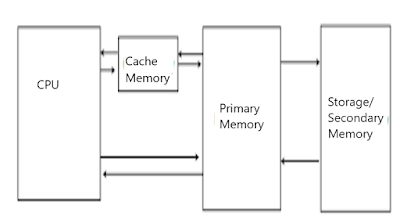Hello friends, today we are going to discuss the 80186 microprocessor with integrated peripherals. The Intel 80186 is an improved version of the 8086 microprocessor. 80186 is a 16-bit microprocessor with a 16-bit data bus and a 20-bit address bus. It has a programmable peripheral device integrated into the same package. The instruction set of the 80186 is a superset of the instruction set of the 8086. The term super-set means that all of the 8086 instructions will execute properly on an 80186, but the 80186 has a few additional instructions. The following figure shows the block diagram and pin diagram of 80186. The CPU is divided into seven independent functional parts. 80186 internal block diagram 80186 68-pins pin diagram Functional parts of 80186 Microprocessor The Bus Interface Unit (BIU) Execution Unit (EU) Clock Generator Programmable interrupt controller Programmable Chip Select Unit (CSU) Programmable DMA Unit Programmable counter/timers The Bus Interface Unit
- Get link
- Other Apps


Thank you for helping loved ones transition, for burying them with blessings and honor.
ReplyDeleteRegards: office.com/setup
This has been a challenging time, and I appreciate you so much.
Regards: office.com/setup
You have no idea how much your help has meant.
Regards: mcafee.com/activate
There was nothing random about your acts of kindness. Thank you for all you have done
Regards: mcafee.com/activate
You took common courtesy to an uncommon level. We’re so grateful for your help.
Regards: mcafee.com/activate
Thank you for always remembering to change the oil and get the car inspected.
Regards: norton.com/setup
You went above and beyond, and I am touched and grateful.
Regards: norton.com/setup
Thanks for posting this valuable information, really like the way you used to describe. Hope I'll get such posts in future too.
ReplyDeletemcafee.com/activate | norton.com/setup | office.com/setup | office.com/setup
Get one-stop answers for downloading, introducing, and initiating office setup. Get 25 digits alpha-numeric key which has been utilized during the way toward actuating it by dialing the sans toll bolster telephone number.
ReplyDeleteoffice.com/setup | office.com/setup | office.com/setup
Excellent and nice post. It will beneficial for everyone. Thanks for sharing such a wonderful post.
ReplyDeleteFix Task Manager
Answer Calls on Your Apple Watch
hello you have written such a intresting blog.it is worth of reading.keep updating and sharing with us
ReplyDeleteDigit me
Zen Watson
Just want to say thank you for the information that you have been shared on your site. Well, it is more better
ReplyDeleteBinary option trading
Binary option trading online
Binary option trading platform
Forex option trading
FX option trading
FX option trading platform
Online trading and investment platform
Option online trading platform
Online option trade platform
Binary option trading system
Forex and binary option trading
Very informative post, your post unique. Thanks for sharing.
ReplyDeletenorton.com/setup | www.norton.com/setup | norton.com/setup